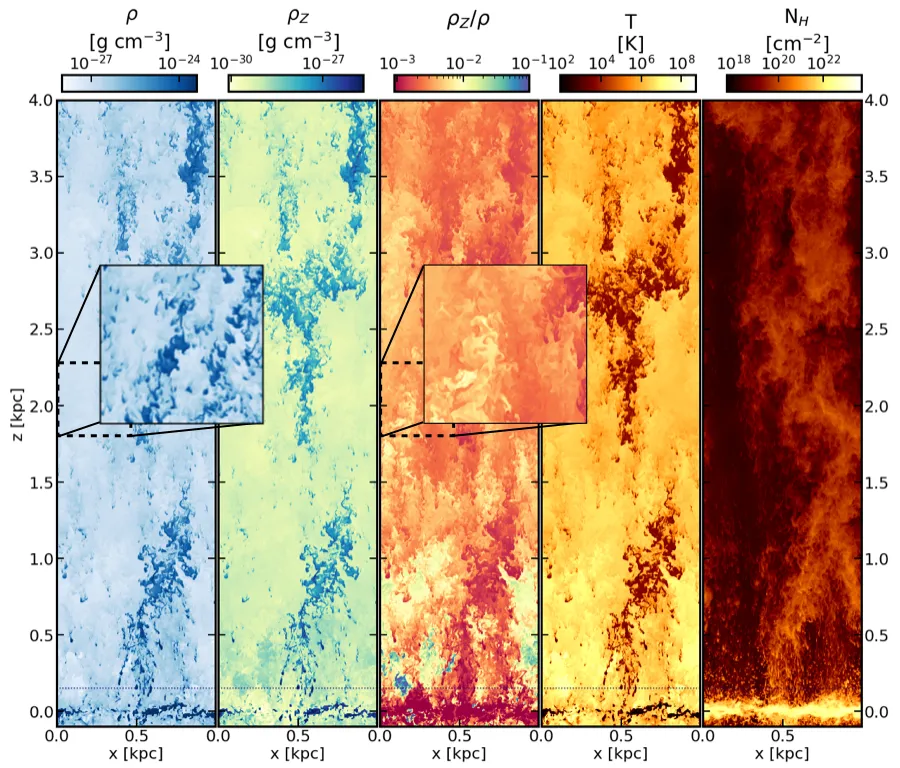
Studying Galaxy Evolution through Simulations- SKA is the limit…?
We will use simulations of the Milky Way to make predictions for SKA.
Research themes
Project status
Content navigation
About
In a galaxy like the Milky Way, nearly as much mass is present in gas as in stars. This gas, which is mostly hydrogen and not visible to the naked eye, plays a crucial role in the evolution of a galaxy. Along with stars, it participates in a feedback cycle where gas collapses to form stars, which in turn expel gas back into the galaxy when they die as supernovae. We study a part of these feedback cycles, known as outflows, using QED—a suite of high-resolution astrophysical simulations of the Milky. QED replicates the conditions around the Solar Neighbourhood to understand how these might affect the properties of large-scale outflows.
The purpose of this project is to understand how the radio emission from hydrogen gas in the outflows appears. We will compare mock observations against the sensitivity of telescopes like SKA to predict whether the signals from the outflowing gas can be detected.
Through this project, you will gain hands-on experience with galaxy-scale simulations and acquire skills in manipulating astrophysical datasets using popular tools.

Image: A slice from the QED suite of simulations that we will use to make predictions for SKA. From left to right- gas density, oxygen mass density, abundance, temperature, and column density.


